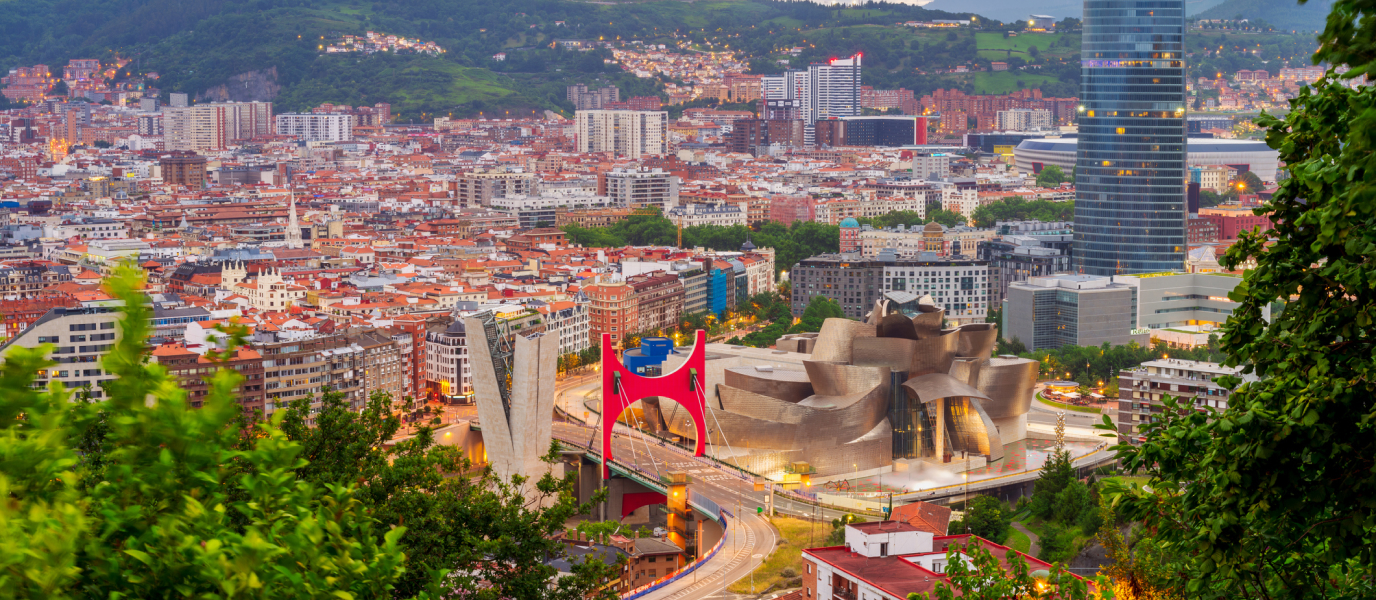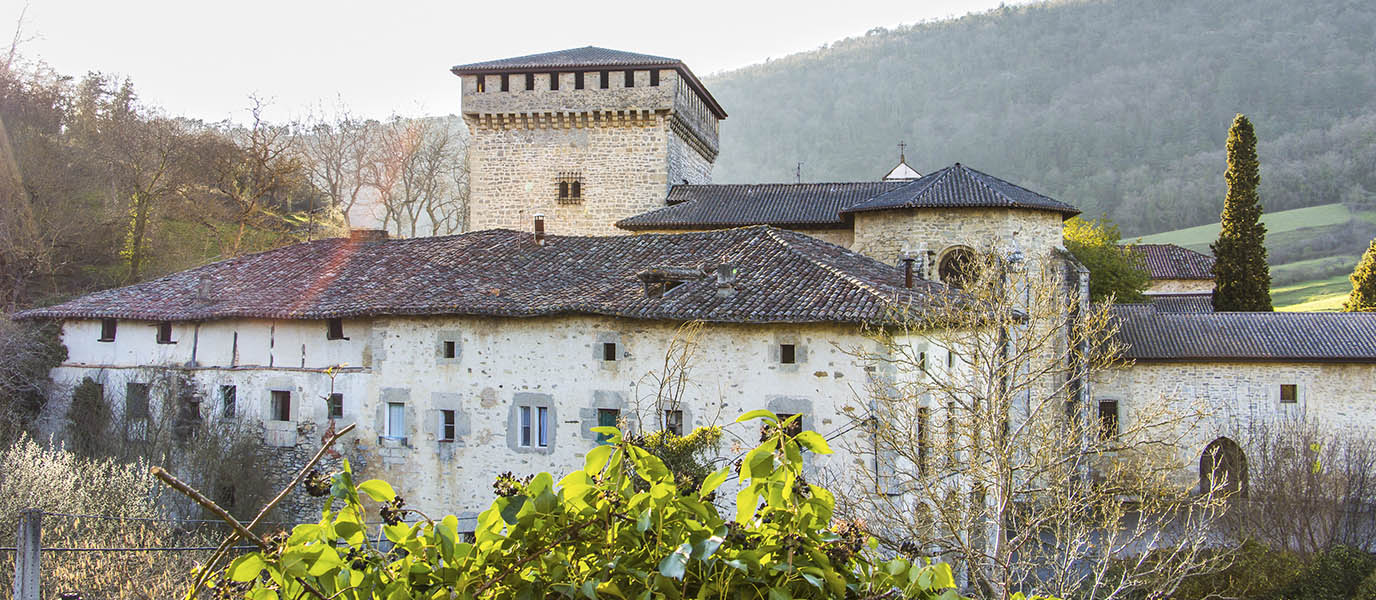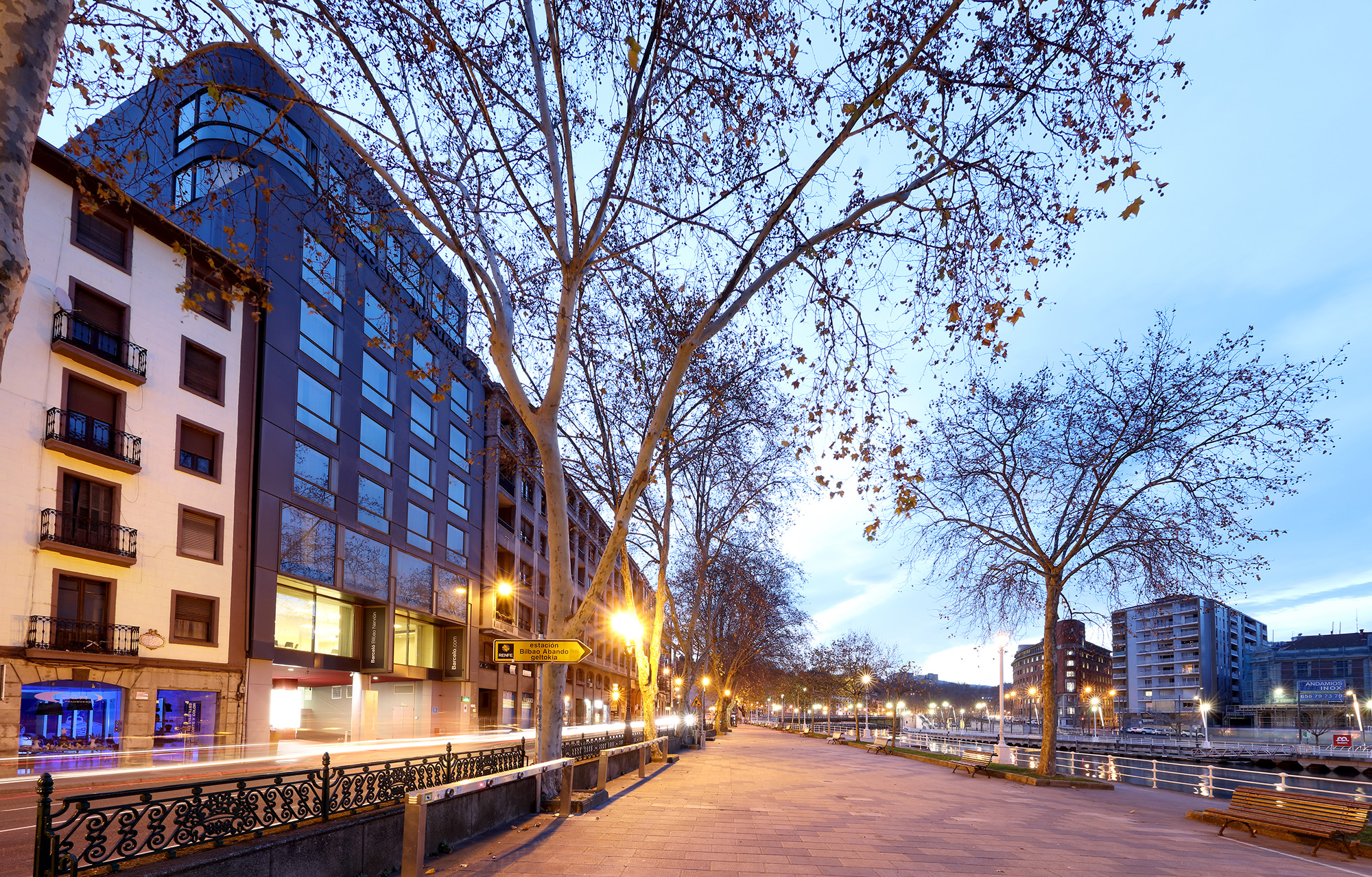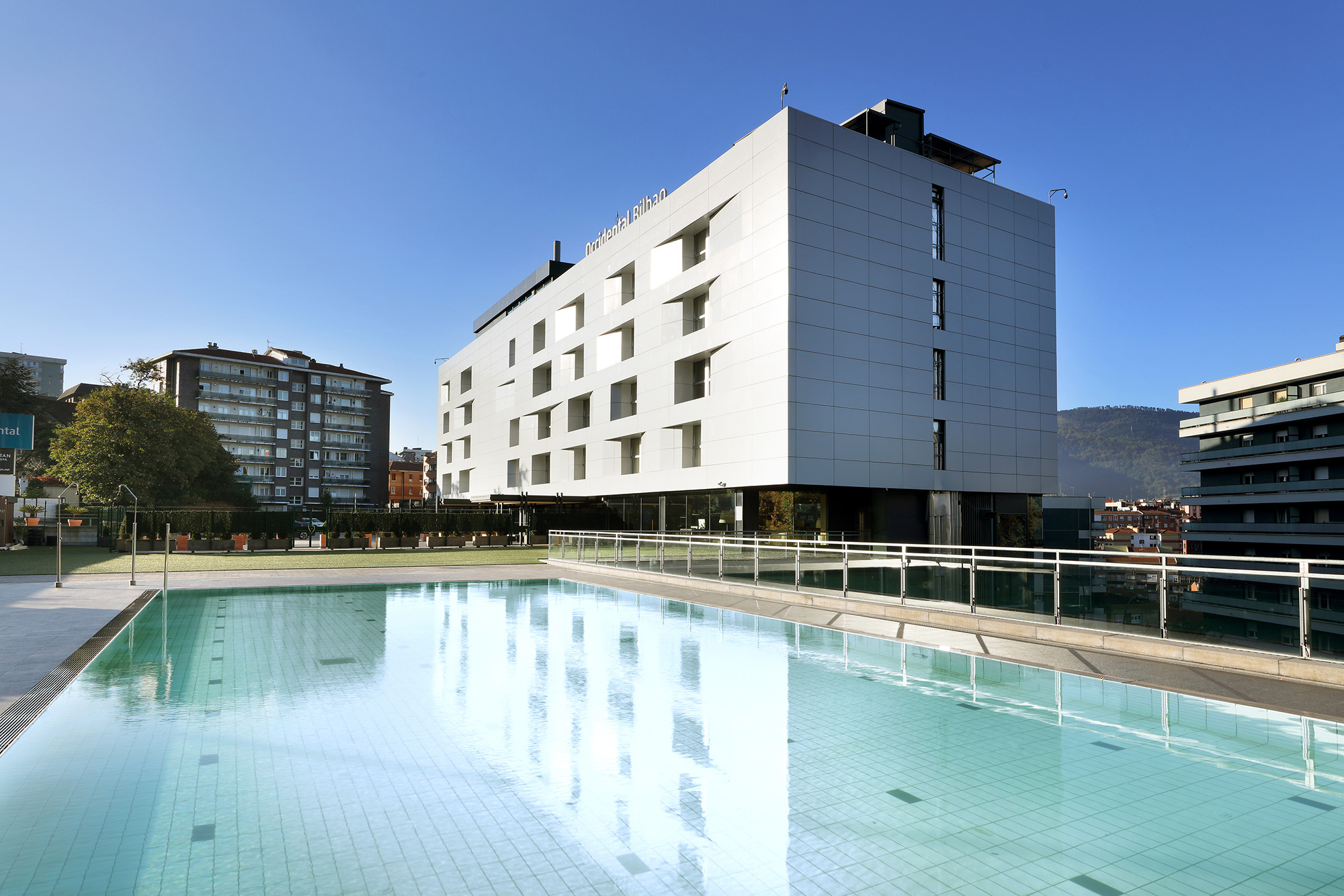Bilbao, near both San Sebastián and Asturias, is one of the jewels of northern Spain. Bilbao has developed into a sophisticated modern city while still preserving its traditional Basque culture.
Bilbao has reinvented itself, and has been transformed from a grey city dominated by industry, into a cosmopolitan, designer metropolis. Great architects, including Norman Foster and Frank O. Gehry, have left their illustrious hallmarks on the city. If you decide to spend a few days in the city known in Spain as “la ciudad del Nervión” (after the river on whose banks it was built), you need to know the places you really must visit. So we’ve made a list of the most important sights.
- Places you must see in Bilbao
- Bilbao’s Guggenheim Museum
- Bilbao’s historic quarter
- Where to go for pintxos — Basque-style tapas — in Bilbao
- Bilbao’s Plaza Nueva
- Bilbao’s Gran Vía
- Bilbao’s Santiago Cathedral
- Church of San Antón
- Bizkaia Bridge
- The Artxanda Mirador [Viewing Point]
- Mercado de la Ribera [Market]
- Plaza Moyúa
- Arriaga Theatre
- Begoña Basilica
- Doña Casilda Park
- Bilbao Estuary
- Not-to-be-missed museums in Bilbao
PLACES YOU MUST SEE IN BILBAO
Bilbao’s Guggenheim Museum
The undisputed symbol of Bilbao’s great urban transformation over the last two decades. At Bilbao’s Guggenheim Museum, visitors can enjoy architecture, art, sculpture, etc. Dedicated to modern and contemporary art, the museum was designed by Frank O. Gehry, and opened on 18 October 1997. The museum is one among many centres belonging to the Solomon R. Guggenheim Foundation, and is the “little brother” of the famous New York Guggenheim. The building’s cladding of 35,000 sheets of titanium is an awe-inspiring architectural feature, and is the first thing to leave visitors open-mouthed — but the museum’s interior does not disappoint either. The works on display change frequently, as it stages temporary exhibitions. Only ‘The Matter of Time’, Richard Serra’s great sculpture in steel, has not been moved from its original position in its own 130-metre-high room. The museum is situated near the Bilbao’s estuary [Ría, in Spanish]. Ab.andoibarra Etorb, 2.
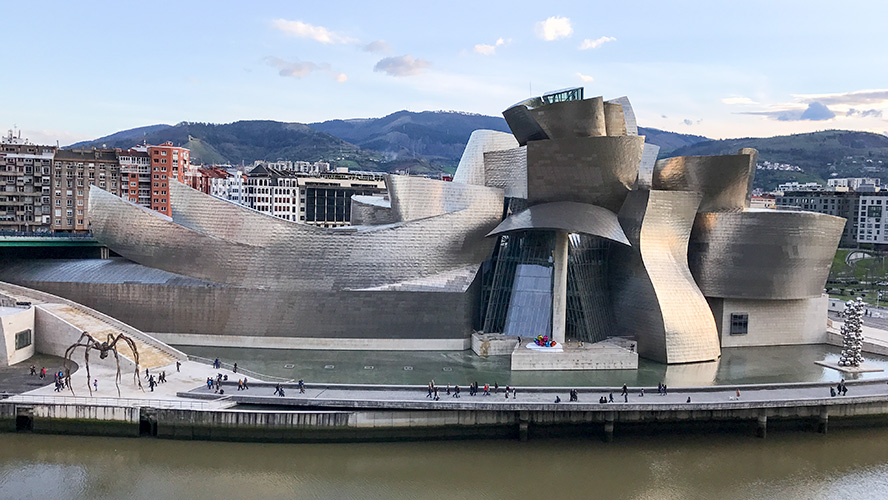
Bilbao’s historic quarter
Also known as the ‘Siete Calles’ [Seven Streets], Bilbao’s historic quarter is an intricate network of streets that make up the city’s oldest and possibly liveliest neighbourhood. Located close to the estuary, it is home to the city’s most iconic historical monuments including the Cathedral of Santiago, and the Church of San Antón. This led to the area being declared a Historic-Artistic Monument in 1972. It is also the favourite haunt of those who love a glass of wine and the Basque-style tapas known as ‘pintxos’.
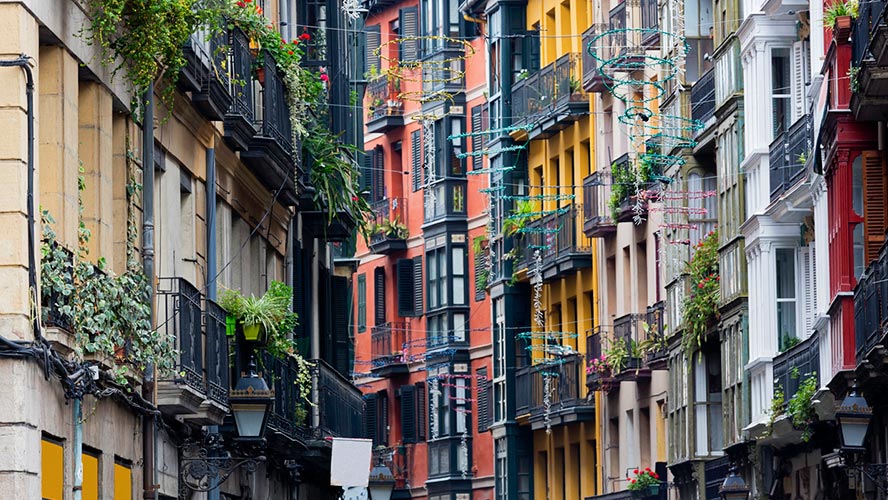
Where to go for pintxos — Basque-style tapas — in Bilbao
If you’re keen to discover Bilbao’s social life, your best plan is to make for the city’s pintxos areas, which you’ll find mainly concentrated in and around the historic quarter’s ‘Siete Calles’. Here are the most traditional bars, where you can enjoy a good glass of txacoli, and some mouth-watering and imaginative pintxos. Good alternative areas for pintxos are the Diputación area and the residential district of Deusto.
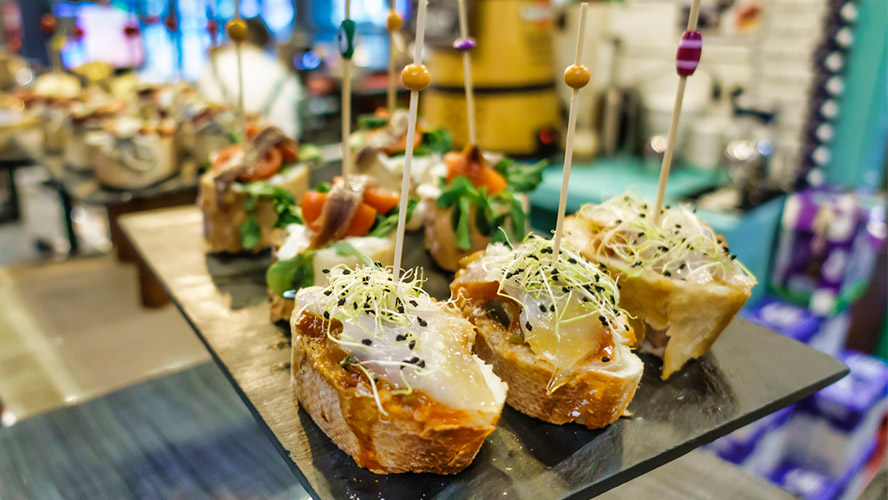
Bilbao’s Plaza Nueva
Plaza Nueva is located in Bilbao’s historic quarter. An arcaded square in a Neoclassical style built during the nineteenth century, its 64 arches are home to a large number of bars and restaurants. Here you can enjoy delicious traditional Basque cuisine, the famous pintxos, and the locally-produced txacoli. This is one of the locals’ favourite places to spend time with friends, and is one of the city’s great social hubs. So it is always bustling during the early evening, with people enjoying a pre-dinner aperitif. If you go there on a Sunday, you can also visit the street market, and browse the antiques, coins, books, and many other items for sale.
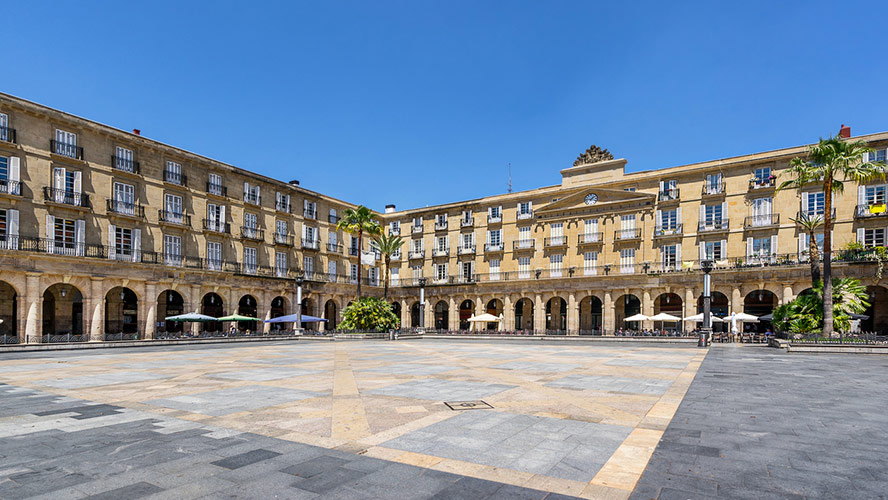
Bilbao’s Gran Vía
A lively shopping area, with a certain aristocratic air, Bilbao’s Gran Vía is a pleasant avenue along which to stroll, shop and admire the architecture. Set aside half an hour to walk along the route that links Plaza Circular with the Plaza del Sagrado Corazón de Jesús. You certainly won’t be bored: along the way you’ll find scores of shops, restaurants and attractive mansions, such as La Diputación with its impressive façade. Plaza Moyúa, edged with beautiful architectural pieces such as the Chávarri palace, is another place to linger for a moment to enjoy the views and the lovely flowers. The gilded sculpture of the Sagrado Corazón [Sacred Heart] stands atop a tall plinth, and announces from afar the start (or the end) of Bilbao’s Gran Vía.
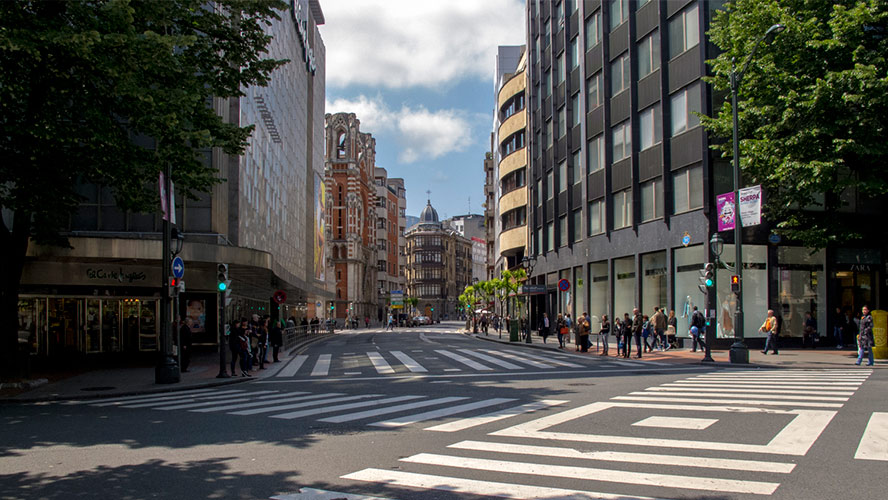
Bilbao’s Santiago Cathedral
This is the Basque Country’s greatest Gothic monument. Santiago Cathedral was built over 600 years ago, but has only been recognised as a cathedral since 1955. Although its construction spanned more than a century, there were no interruptions, so its architectural style is completely uniform. It has three entrances, and it is interesting to note that on Sundays, it offers bilingual Masses, in Spanish and Basque. Plaza de Santiago, 1.
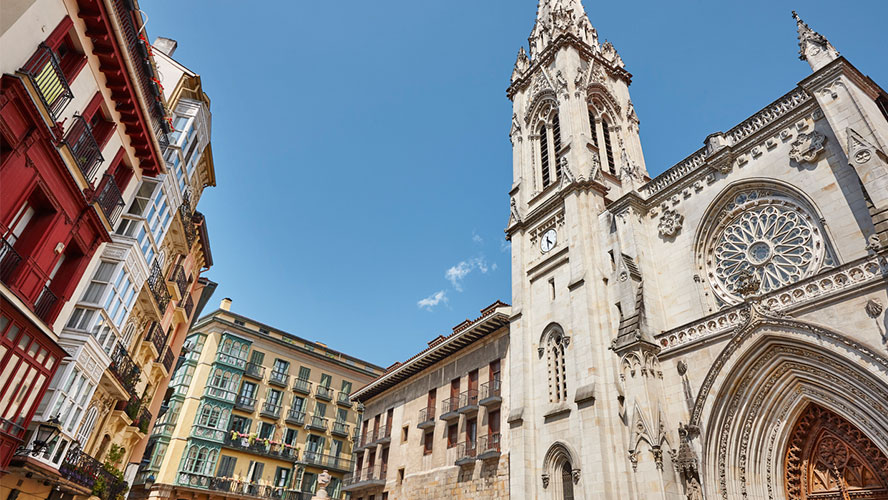
Church of San Antón
One of the icons of Bilbao, it even appears on the city’s coat of arms. Construction of the Church of San Antón began in 1468, and aimed to address the spiritual yearnings of the people of Bilbao. In the past, its interior has been used as a cemetery, and its terrace as a bullfighting arena. Mainly Gothic in style, the Church of San Antón also has Renaissance and Baroque architectural features. Erribera Kalea, 24.
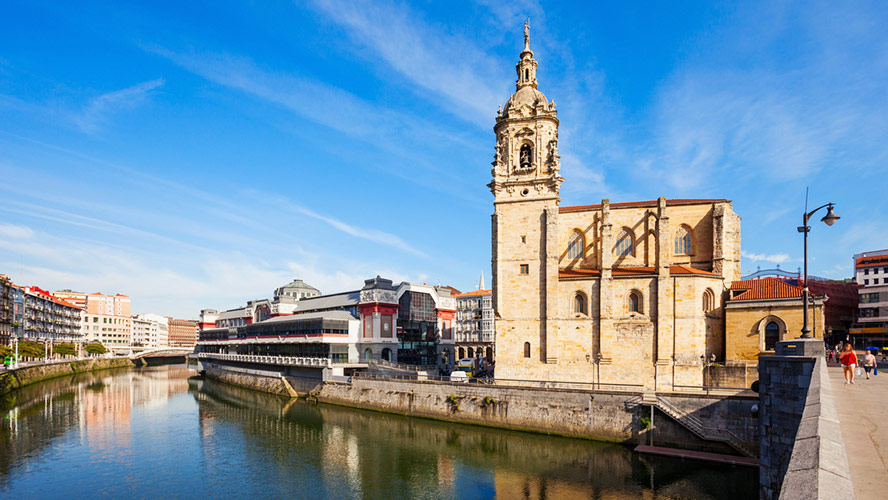
Bizkaia Bridge
Also known as the Puente Colgante [Suspension, or Hanging Bridge], the Puente de Bizkaia is a toll transporter bridge built between 1887 and 1893 to link the banks of the Bilbao estuary. It was the first bridge of its kind, and is one of eight still in existence, so it is considered the oldest working transporter bridge in the world. The bridge, located in Getxo, is 61 metres high and 160 metres long.
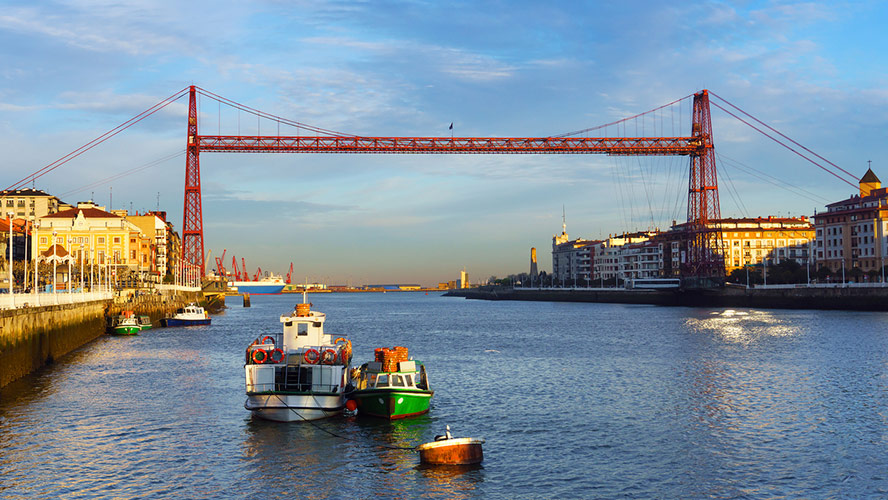
The Artxanda Mirador [Viewing Point]
If you go up Mount Artxanda, the Artxanda Mirador offers visitors the opportunity to experience Bilbao from a different perspective. It stands at an altitude of 300 metres in a pleasant natural setting which is a source of pride to the people of Bilbao. From here, you can see the churches and traditional buildings of the historic quarter, and trace the course of the Bilbao estuary as it zigzags across the city, dividing it into two. This is a perfect place to spend an enjoyable afternoon (or morning) as a family, and with children, as there is also a good variety of restaurants. In addition, it is possible to travel up the mountain by cable car. Enekuri Artxanda Errepidea, 70.
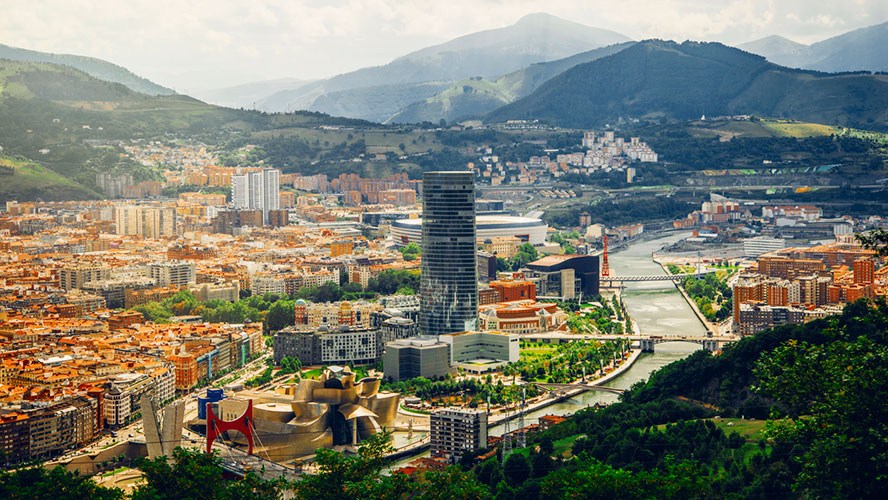
Mercado de la Ribera
One of Spain’s largest food markets is located on the right-hand bank of the river Nervión, in the heart of the old quarter.Here, traditional stalls selling fish, fruit, meat and vegetables co-exist with gastrobars in a space where customers can also listen to jazz. The Mercado de la Ribera was built in 1929 in a Rationalist and Art Deco style by Pedro Ispizua, an architect who developed in the shadow of Antoni Gaudí. Erribera Kalea, 20.
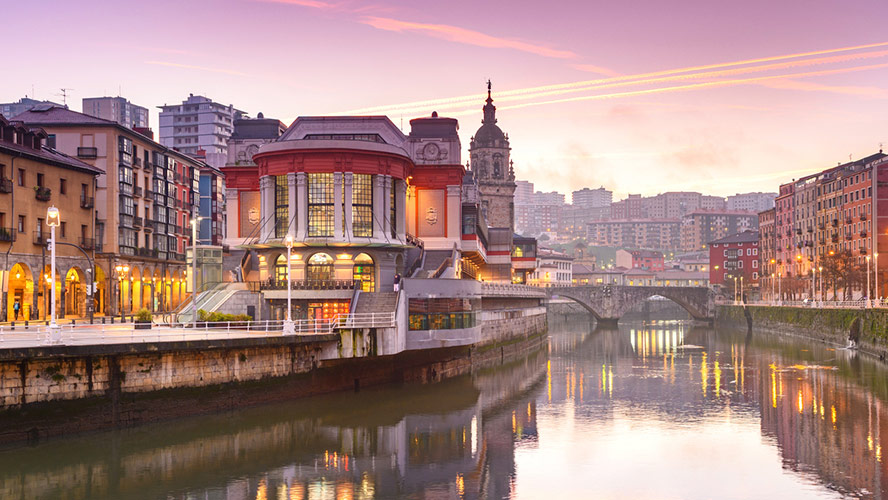
Plaza Moyúa
The Plaza Moyúa, a square more commonly known to locals as Plaza Elíptica, is one of the city’s nerve centres. Designed in the 1940s by the architect José Luis Salinas, it was remodelled decades later by his son. The result is a blend of both their tastes. Today, we can enjoy the square’s English- and French-style flowerbeds, bursting with colour, along with some intriguing steel street lamps and benches where visitors can sit after a busy sightseeing expedition. The square is surrounded by impressive architecture and attractive buildings such as the Chávarri palace.
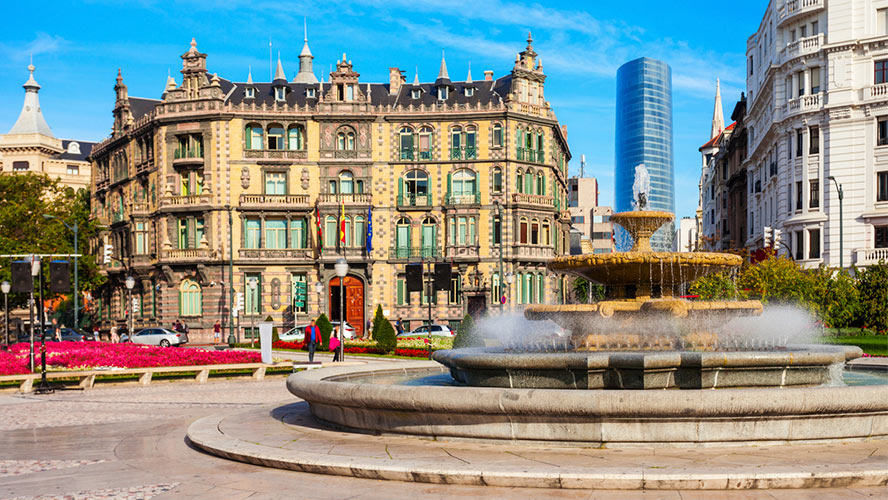
Arriaga Theatre
This theatre is the crowning glory of the performing arts in Bilbao. Now a hundred years old, the Arriaga Theatre takes its name from one of the city’s most famous composers, known as “the Spanish Mozart”. It can accommodate 1,200 people, and its programme matches that of Europe’s great opera houses, dance venues and theatres. Arriaga Plaza, 1.
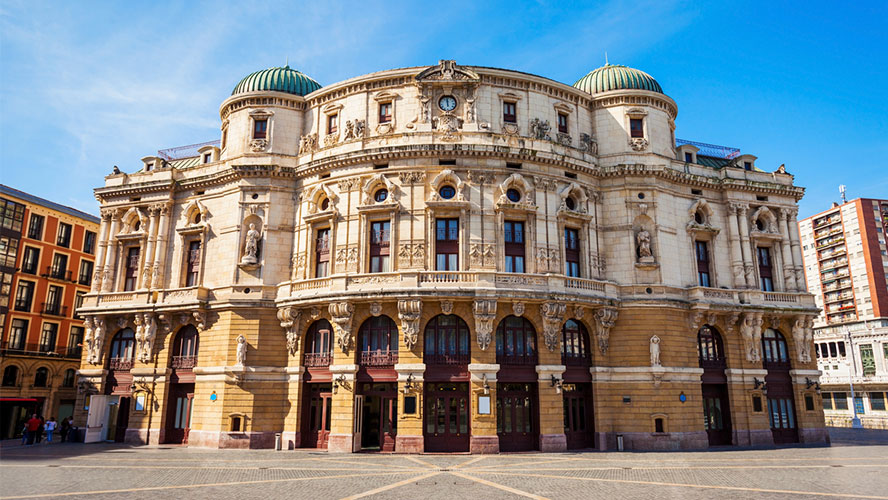
Basílica de Begoña
The basilica of Nuestra Señora de Begoña towers above the city and watches over it. In the Plaza de Unamuno, you will find the 213 steps of the Calzadas de Mallona, a stairway that will lead you to this beautiful basilica dedicated to the city’s patron saint. There is also a lift in Calle de la Esperanza that will take you up to the church. Remember that the Begoña basilica was built on the spot where the Virgin is said to have appeared early in the sixteenth century. It is built in the late Gothic style, but has some Renaissance elements. The altarpiece is presided over by a painted Gothic carving of the Virgin. The festival of Begoña is celebrated on 11 October with a pilgrimage, together with concerts, processions, dancing, and displays of traditional Basque sports. Begoñako Andra Maria Kalea, 38.
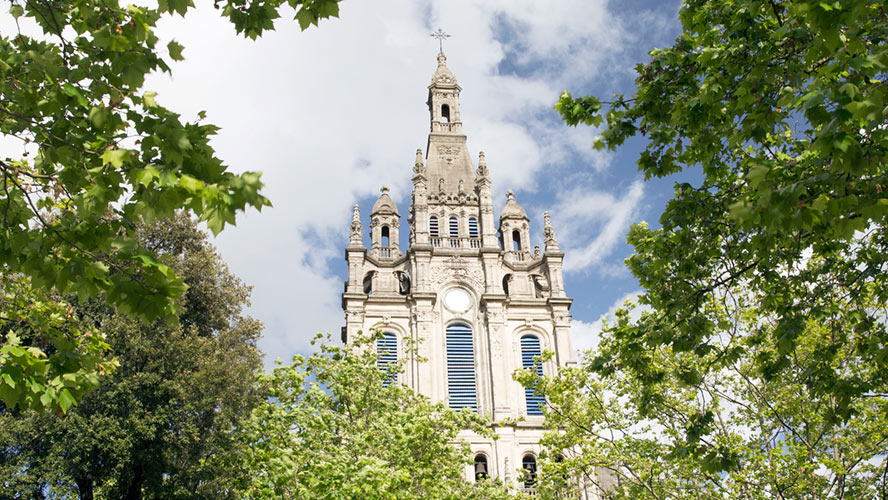
Doña Casilda Park
Built in a Romantic style in 1907, Doña Casilda Park is the green lung of Bilbao. It is an ideal place to take a little break and relax during your sightseeing tour of Bilbao. The park covers over eight hectares, where various species of swans and ducks wander at will, and is home to over 1,500 species of plants and trees.Also known as the ‘park of ducks’, the place has a number of attractions. These include ‘La Pérgola’, with its lake and a fountain which produces a spectacular play between light and water; sports pitches, and a large children’s playground. Within the park stands Bilbao’s Fine Arts Museum.
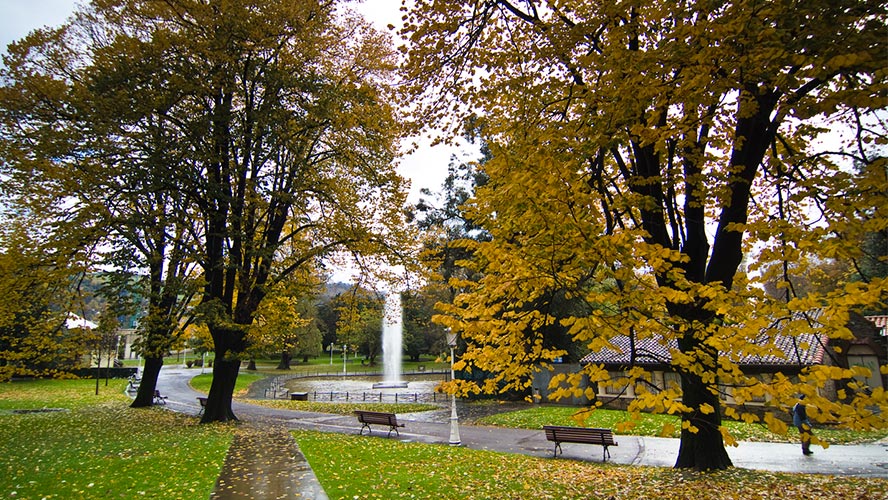
Bilbao Estuary
Also known as Nervión, Bilbao’s Ría or Estuary is where the rivers Nervión and Ibaizábal flow into the Cantabrian Sea. It is one of the city’s loveliest spots, so it’s a great idea to go for a stroll here. The estuary divides the city into two. On one side lies the historic quarter, and on the other, the Ensanche. The estuary has played a very important role in the city’s economy, as it was the main hub of Bilbao’s industry. One of the best things about following the course of the estuary is that you have to cross several bridges, including the Zubi Zubi, the white Calatrava bridge, and La Salve bridge. Another brilliant way of exploring the estuary is on a boat trip; you will see the Guggenheim Museum, the Padre Arrupe walkway, the Isozaki and Iberdrola towers (the latter is the Basque Country’s tallest tower), and the Euskalduna Palace.
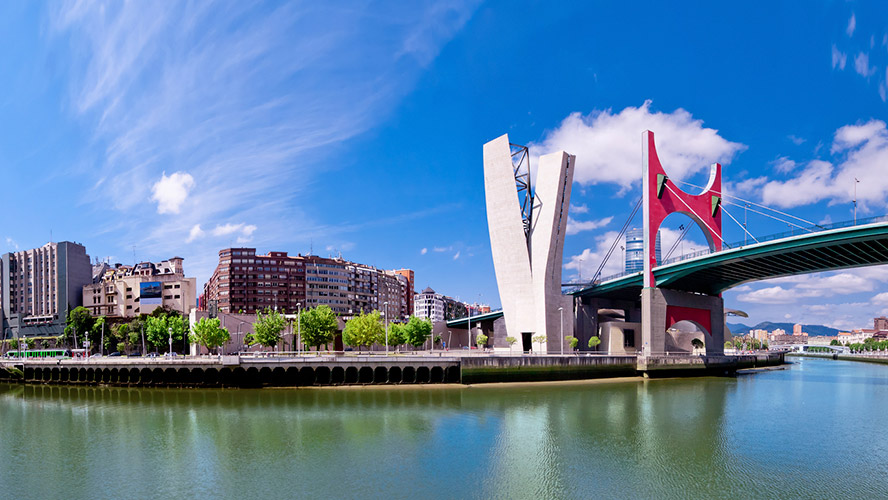
NOT-TO-BE-MISSED MUSEUMS IN BILBAO
Bilbao’s Fine Arts Museum
Apart from the renowned Guggenheim, Bilbao has other museums that are well worth visiting. This is certainly true for the Fine Arts Museum, one of the most important in Spain, not only because of its precious art collection, but also because of its historical significance. This museum was the result of the 1945 amalgamation of the first Fine Arts Museum, founded in 1914, and the Museum of Modern Art, created in 1924. The museum is a repository for more than 10,000 works of art of many different styles and from many different periods: ancient art, modern art, contemporary art, Basque art, and so on. Its collections include sculptures, paintings, decorative pieces, and other works on paper and in other formats dating from the twelfth century. Museo Plaza, 2.
Centro Azkuna
The Centro Azkuna, still known to many of the city’s people as La Alhóndiga de Bilbao, is a modern leisure and cultural centre. This former warehouse, built in the Modernista style and once used for storing wine, has been converted into one of Bilbao’s must-see sights. The remodelling of the entire building by Philippe Starck has created an impressive, multi-purpose facility with galleries, cinemas, a gymnasium, restaurants, etc. Among its most striking spaces are the ‘Atrio de las Culturas’ [Culture Atrium], a huge square with 43 columns in different styles, and the ‘Terraza del Sol’ [Sun Terrace], which has a swimming pool with a transparent floor.You’re bound to find some activity or exhibition that interests you on its programme.
Itsasmuseum Bilbao Maritime Museum
Sailing enthusiasts and those who love boats and history will find the Itsasmuseum Bilbao Maritime Museum one of the most fascinating attractions in Bilbao. The museum is located in the former Euskalduna shipyards, and was established with the aim of disseminating the maritime heritage of the Bilbao Estuary. It is well worth seeing the outside of the building — where you will find the former docks and the magnificent, fire-engine red Carola Crane — as well as the interior. Once inside, you could divide your time between the three main exhibition areas: ‘The Ría: a maritime port’, ‘The Ría: market and factory,’ and ‘The Ría: naval shipyard’. This is a very educational visit for adults as well as for children.
























































